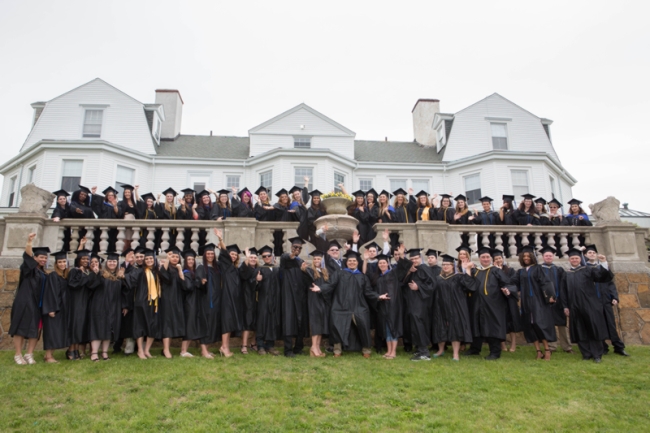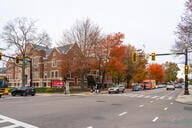You have /5 articles left.
Sign up for a free account or log in.

Illustration Photo
When it comes to graduation rates, some colleges are finding that small campaigns can lead to big improvements.
Only 59 percent of the students who enrolled at a four-year institution in 2007 graduated with a degree by 2013, according to the U.S. Department of Education’s national six-year graduation rate. There are many reasons why the remaining 41 percent didn’t. Maybe they changed majors, setting them back several semesters, transferred to a different college but found some of their courses didn’t follow, or ran into financial or personal issues that prevented them from finishing their studies.
A sliver of that population, however, is being held back by much less insurmountable problems, such as a small financial hold or a single missing course. A handful of colleges making an effort to solve one particular problem -- getting students who are eligible to but for some reason don’t apply for graduation -- are seeing a measurable jump in their graduation rates.
Their work is being supported by the Education Advisory Board, the Washington-based research and consulting firm. Through membership in the EAB’s Student Success Collaborative, universities are using data to find at-risk students and offer interventions that keep them on track.
At Virginia Commonwealth University, advising has long been a “reactive process,” said Seth Sykes, associate vice provost for strategic enrollment management. Traditionally, he said, the university sends an email blast to students who, by their completed credits and grade point average, should be eligible to apply for graduation. But from there, it becomes the students’ responsibility to gather the required forms, meet with advisers and submit the application on time.
Most VCU students don't use academic advisers but rely on information they find online, Sykes said. Those who seek out advisers in person are either high performing or struggling to keep up, which leaves a large section of students who may only need a little help to succeed, he said.
The university overhauled the advising process last year in order to solve problems before they appear, Sykes said. Advisers now use technology to identify and contact students who, for example, need to register for a major requirement but haven’t, whose grades have fallen below departmental thresholds and -- again -- who are an application away from graduating.
“It’s much more based on what we can do for students proactively as opposed to dealing with them as they come to us,” Sykes said.
This spring, VCU saw 336 more students apply for graduation -- a 19 percent increase from the year before. The university’s six-year graduation rate also surpassed the national average, increasing to 62 percent from 59 percent.
Sending students more frequent reminders that they need to apply for graduation isn't solely to credit for the increase, but it did play a part, Sykes said. So did a campaign to encourage students to take 15 credits a semester and software that lets students track their academic progress, he added.
“The use of technology really has helped make campaigns like this a lot easier,” Sykes said. “We have a plan in mind about what we want to do in terms of advising, but without the tech support to implement it, it’s really difficult. Technology and goodwill need to go hand in hand.”
‘Graduation Specialists’ at CSU
California State University at Fullerton also saw its graduation rate jump after it hired “graduation specialists” to work with juniors and seniors. The specialists last year identified 6,959 students who were in danger of missing their anticipated graduation date, but were able to help 2,488 of them graduate on time. Sometimes the fix was as simple as getting the students to sign up for an independent-study course, saving them time and money that otherwise would have been spent on taking the course another semester, said Peter O. Nwosu, associate vice president for academic programs.
The graduation specialists are part of a larger reorganization of the university’s advising services. When the Western Association of Schools and Colleges in 2010 visited for reaccreditation purposes, it noted that “much remains to be done” before the university could say it provided “adequate and accurate advising” (the university itself flagged the issue in a 2007 institutional report to WASC).
In addition to graduation specialists, the university has started requiring students who have completed between 75 and 84 credits to attend an advising workshop (where this year 79 percent of the 2,374 students in attendance said they did not have an anticipated graduation date), contacting students who enrolled for two semesters but not a third (from which it has managed to re-enroll 208) and hiring retention specialists to focus on freshmen and sophomores, Nwosu said.
Those and other initiatives have helped the university exceed its goal of a 60 percent six-year graduation rate by 2018. Already this spring, the university’s graduation rate reached 62 percent, up 11 percentage points since spring 2012. The university is also taking steps to close the achievement gap -- the graduation rate gap between students of different ethnicities. From spring 2012 to 2015, the gap shrank from 12 percent to 8 percent, according to university data.
The university’s strategic plan calls for 75 percent of students to receive advising before graduation. Using a homegrown system that tracks when students see an adviser, the university can now say about 89 percent of the students who graduated this spring received advising.
“What has actually helped us on our campus is a combination of three things,” Nwosu said. “One is how we’ve organized people to do the work. Two is how we’ve organized technology. … Three is how we’ve organized the data -- in other words, how we’re constantly looking at data to inform the interventions we’re putting into place.”
Democratizing Student Data
Beyond using data to improve their advising services, VCU and CSU Fullerton have another thing in common: they are both members of the Student Success Collaborative. Membership in the collaborative includes access to best practices, consultants and real-time student data that help colleges identify at-risk students. The EAB's previous research has found colleges should focus their advising resources on the “murky middle” -- students with a GPA between 2.0 and 3.0.
Ed Venit, a senior director at the EAB, said universities such as CSU Fullerton and VCU are using the data to answer simple yes-or-no questions that help them chip away at the larger issues of student retention and graduation rates.
“You start breaking problems into subproblems,” Venit said. “Here’s a list of students who haven’t registered for the next term. Here’s a list of students who have bursar holds. … Once you know who isn’t registered for the next term and once you know someone who hasn’t done something logistical, you can reach out to them.”
The fact that colleges are finding hundreds -- or, in the case of CSU Fullerton, thousands -- of students who should be graduating by doing simple data queries is a “commentary on the state of affairs of IT systems across the nation at universities,” Venit said. Extracting data from a college’s enterprise resource planning system is often difficult, he said, so the solution should be to “create user-friendly interfaces and democratize it so everybody can get access.”
“It’s not that these folks don’t want to be helping these students,” Venit said. “They simply haven’t had access to the information before.”




